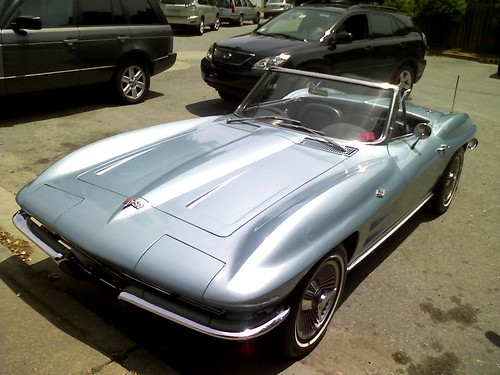Here are two twentieth-century machines that are beautiful, functional, and still have it after several decades of radical technology evolution "should have" passed them by.
This C2 Corvette is as edgy, clean, and exciting as any vehicle built since. It probably always will be:

This original (1978) Cessna 152 performs at original spec after 30 years and looks great doing it:

So what does it take to come up with a design and an implementation that can hold up like these two?
Certainly sportscars and airplanes are not trivial problem domains with few constraints. And they're not domains lacking innovation and evolution. Yet neither of these machines take it on the chin for lacking digital gauges or GPS navigation.
There's some luck, some genius ... what else? It's more than a design question. If it were only about design, we might get bogged down in aesthetics and cultural theory, which is fun but sort of a sui generis sport. (Why does art deco seem futuristic? because "the futuristic" has irremediably incorporated art deco? what about directly undermining this? or does that form a stucturalist framework that reinforces the duality? ... )
One key piece is the absence of over-engineering. The 'vette and the 152 are fabulous implementations of their times, but never strove to be "ahead of their time" in terms of showy engineering.
Contrast a recent BMW or a Mercedes, which always comes off rather less slick a few years on, because at design time it had been packed with every blinking gewgaw money could buy, and those rarely age well. These cars do ok, though, because the first buyer gets a space shuttle experience during her 39-month lease. And since the drivetrain and suspension tend to be solid on these cars, the cars hold up for the next 25 years -- they just look increasingly tired doing it.

No comments:
Post a Comment